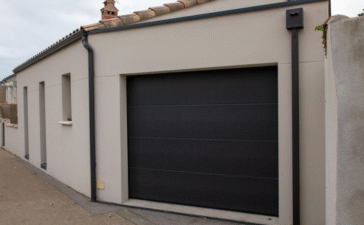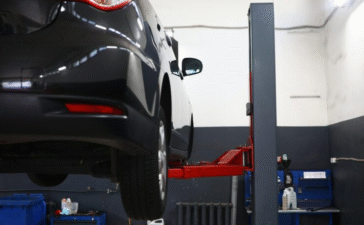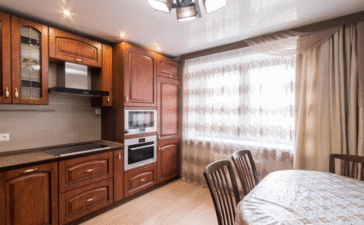A home elevator might sound like an extravagant feature reserved for mansions, but it’s quickly becoming a practical and sought-after addition to modern homes. Whether for enhancing accessibility, future-proofing a residence, or simply adding a touch of convenience, residential elevators offer significant benefits. However, the first question for most homeowners is about the home elevator cost. The cost of a home elevator isn’t a simple, one-size-fits-all number; it’s a combination of the unit itself, installation complexity, and long-term upkeep.
Understanding the full financial picture is essential before committing to such a significant home improvement project. This guide provides an in-depth look at home elevator costs, breaking down every factor from the initial purchase to ongoing maintenance. By exploring the price ranges, influential variables, and potential savings, you’ll gain the clarity needed to make a confident and informed decision for your home and budget.
What is a Home Elevator?
A home elevator is a compact, private lift designed to transport people and sometimes small items between the floors of a residential property. Its primary purpose is to improve mobility and accessibility, making it easier for individuals with physical limitations, the elderly, or families with young children to navigate a multi-story house. Beyond its functional role, a home elevator can also be a statement of luxury and a significant upgrade to a property’s value.
There are several common types of home elevators, each with its own mechanism, benefits, and cost implications. Hydraulic elevators are a popular choice known for their smooth ride and robust lifting capacity. Traction elevators, which use a counterweight system, are often more energy-efficient and faster. Machine-room-less (MRL) elevators save space by integrating the drive system within the elevator shaft. Finally, vacuum or pneumatic elevators use air pressure to move the cabin and are known for their sleek, futuristic design and minimal construction requirements.
Average Cost of Installing a Home Elevator
The price of installing a home elevator can vary widely, with options available for different budgets. Generally, the total cost for a home elevator, including installation, ranges from $10,000 to over $50,000.
For those seeking budget home elevator options, basic models typically start between $10,000 and $20,000. These are often simpler systems, like some pneumatic or basic hydraulic models, designed for two-story homes with minimal customization.
Mid-range options usually fall between $20,000 and $35,000. This category includes more robust hydraulic or traction elevators with better finishes, more safety features, and greater customization possibilities. This is a common price point for residential elevator pricing in many custom-built homes.
For luxury and custom-made elevators, costs can begin at $35,000 and climb to $50,000 or more. These high-end systems offer premium materials like glass cabins and custom wood interiors, advanced technology, and designs tailored to unique architectural styles. The cost of luxury home elevators reflects their bespoke nature and superior quality.
The home elevator installation cost is also influenced by the number of floors. A standard two-stop elevator will be the most affordable, with each additional floor adding approximately $5,000 to $15,000 to the total price, depending on the elevator type and construction required.
Key Factors Affecting Home Elevator Cost
Several variables determine the final price tag of your home elevator project. Understanding these factors affecting elevator cost will help you manage your budget effectively.
The elevator type is one of the most significant cost drivers. Pneumatic elevators are often cheaper for two-story installations, while hydraulic and traction elevators can be more cost-effective for multi-floor homes despite a higher initial price. The design, including materials for the cabin walls, flooring, and lighting, also plays a crucial role.
Size and weight capacity are another consideration. A standard elevator is designed for one or two people, but if you need a larger cabin to accommodate a wheelchair or multiple passengers, the cost will increase due to the need for a more powerful motor and a larger hoistway.
The number of floors the elevator serves directly impacts the price. More floors require more materials, a more complex mechanical system, and longer installation labor.
Installation complexity can add thousands to the bill. Retrofitting an elevator into an existing home is typically more expensive than including one in a new construction project. Factors like the need for significant structural modifications, shaft construction, or electrical work will raise the cost. The elevator’s location within the home also matters.
Finally, regional cost differences play a part. Labor and material costs can vary significantly between different cities and states, affecting the final cost of elevator installation by location.
Long-Term Maintenance home elevator cost
The financial commitment doesn’t end with installation. Like any complex machine, a home elevator requires regular maintenance to ensure it operates safely and reliably. The average annual cost for a home elevator maintenance plan ranges from $300 to $500.
Most elevator companies offer service plans that include annual or semi-annual inspections, lubrication of moving parts, and safety checks. These plans are crucial for preventing major issues and extending the life of your elevator. Without a service agreement, you could pay $100 to $200 per visit for a technician.
Long-term costs also include potential repairs and part replacements. Components like cables, seals, or control boards can wear out over time. While a well-maintained elevator can last for decades, it’s wise to budget for occasional repairs, which can cost several hundred to a few thousand dollars.
Most new elevators come with a manufacturer’s warranty, typically covering parts for one to three years. Many companies offer extended warranties or service agreements that provide peace of mind by covering labor and parts for a longer period.
How to Reduce the home elevator cost
While a home elevator is a significant investment, there are ways to make it more affordable.
First, choose a cost-effective model. Standardized hydraulic or traction models are often more budget-friendly than highly customized pneumatic or luxury elevators. Opting for standard finishes and sizes can also keep costs down.
Next, research and select a reputable but affordable elevator company. Get at least three quotes from different providers to compare prices and services. A local company may offer more competitive pricing than a national brand.
Look into government grants or rebates. In the United States, programs like the Specially Adapted Housing (SAH) grant for veterans or state-based Medicaid waivers may offer financial assistance for home modifications that improve accessibility. Additionally, some costs may be tax-deductible as a medical expense if the elevator is deemed a medical necessity. Check for home elevator rebate programs in your area.
While DIY installation is not recommended for complex systems like hydraulic or traction elevators due to safety risks and building codes, some simpler pneumatic systems may have options for partial self-installation to reduce labor costs. Always consult with the manufacturer before considering this path.
The Pros and Cons of a Home Elevator
Weighing the advantages and disadvantages is a key part of the decision-making process.
The primary benefit is improved accessibility and convenience. It allows residents to move freely between floors, which is essential for aging in place or for individuals with mobility challenges. A home elevator can also significantly increase your property value—by as much as 10%, according to some real estate experts. Finally, it adds a distinct element of luxury and modern convenience.
The main disadvantage is the significant upfront cost. In addition to the purchase and installation, there are ongoing maintenance costs and the potential for expensive repairs. Elevators also require a dedicated footprint, which can be a challenge in smaller homes.
Is a Home Elevator a Worthwhile Investment?
Determining if a home elevator is worth the investment depends on your personal circumstances and long-term goals.
From a return on investment (ROI) perspective, a home elevator can be a valuable addition, particularly in luxury markets or areas with an older demographic. It broadens your home’s appeal to a wider range of potential buyers, including those looking for accessible living spaces. The ROI of home elevators is often realized through both increased property value and enhanced marketability.
For individuals who need it for mobility, the long-term value is immeasurable. It can be the key factor that allows someone to remain in their beloved home for years to come, avoiding the high costs and emotional toll of moving to a single-story house or assisted living facility. The convenience and safety it provides can justify the home elevator investment value many times over.
Alternatives to Home Elevators
If the cost or space requirements of a home elevator are prohibitive, there are other accessibility solutions to consider.
Stairlifts are a popular and more affordable alternative. They consist of a chair that travels along a rail installed on a staircase. While functional, they are less convenient than an elevator, cannot transport multiple people or bulky items, and may not work for all staircase designs.
Platform lifts, also known as vertical platform lifts (VPLs), are another option. They are like a mini-elevator, designed to lift a person in a wheelchair over a short vertical distance, such as up to a porch or between split levels. They are generally less expensive than a full home elevator but are limited in travel height.
How to Choose the Right Home Elevator
Choosing the best home elevator for your budget involves careful planning.
Start by evaluating your needs. Consider why you want an elevator is it for immediate accessibility, future planning, or luxury? How much space do you have available? What is your realistic budget for both installation and maintenance?
Next, research and choose a trusted residential elevator company. Look for providers with years of experience, positive customer reviews, and proper certifications. A reputable company will provide a transparent quote, explain all your options, and guide you through the process without pressure. Don’t hesitate to ask for references and check their credentials.
You would also like: “window reveal“
Make an Informed Decision on Your Home Elevator
The journey to installing a home elevator is a major undertaking, but it can be a transformative improvement for your home and quality of life. By understanding the average costs, the factors that drive prices up or down, and the long-term maintenance requirements, you are now equipped to navigate the process confidently.
Take your time, request multiple quotes, and carefully assess all the options available. The right home elevator is out there, and with diligent research, you can find a solution that fits your needs, enhances your home, and respects your budget.
Frequently Asked Questions
How long does a home elevator last?
A well-maintained home elevator can last for 20 to 30 years or even longer. The lifespan depends on the type of elevator, the quality of the installation, and the consistency of routine maintenance. Regular service helps extend the life of key components and ensures the system remains safe and efficient.
Can you install a home elevator in an existing house?
Yes, it is possible to retrofit a home elevator into an existing house. The process is more complex and typically more expensive than installing one during new construction because it may require creating a hoistway, making structural modifications, and running new electrical wiring. Common locations for a retrofit include closets stacked on top of each other, the corner of a large room, or an exterior shaft built onto the side of the house.
What is the annual cost of maintaining a home elevator?
The annual cost to maintain a home elevator typically ranges from $300 to $500. This fee usually covers a service contract that includes one or two professional inspections per year. During these visits, a technician will lubricate parts, perform safety tests, and make minor adjustments to keep the elevator running smoothly.
Do I need a machine room for my home elevator?
Not necessarily. While traditional hydraulic and some traction elevators require a separate machine room to house the motor and control systems, many modern designs do not. Machine-room-less (MRL) elevators integrate the drive system into the top of the hoistway, saving space. Pneumatic elevators also have a self-contained design, making them a good option for homes where space is limited.
How much space is needed for a home elevator?
The space required for a home elevator depends on the type and size of the cabin. A standard residential elevator typically needs a footprint of about 20 to 25 square feet (e.g., 4 feet by 5 feet). However, more compact models, like some pneumatic elevators, can fit in a space as small as 3 feet in diameter. It is essential to consult with an elevator professional to determine the exact space requirements for your specific needs.












